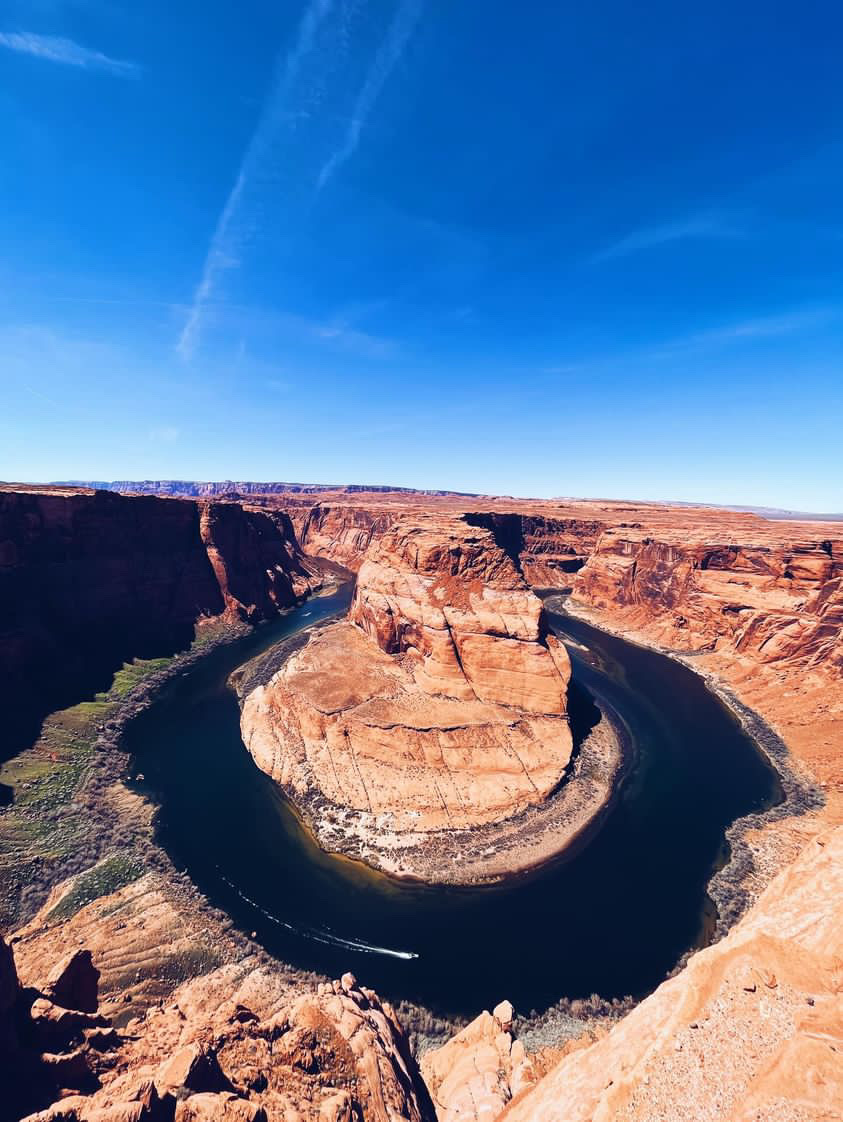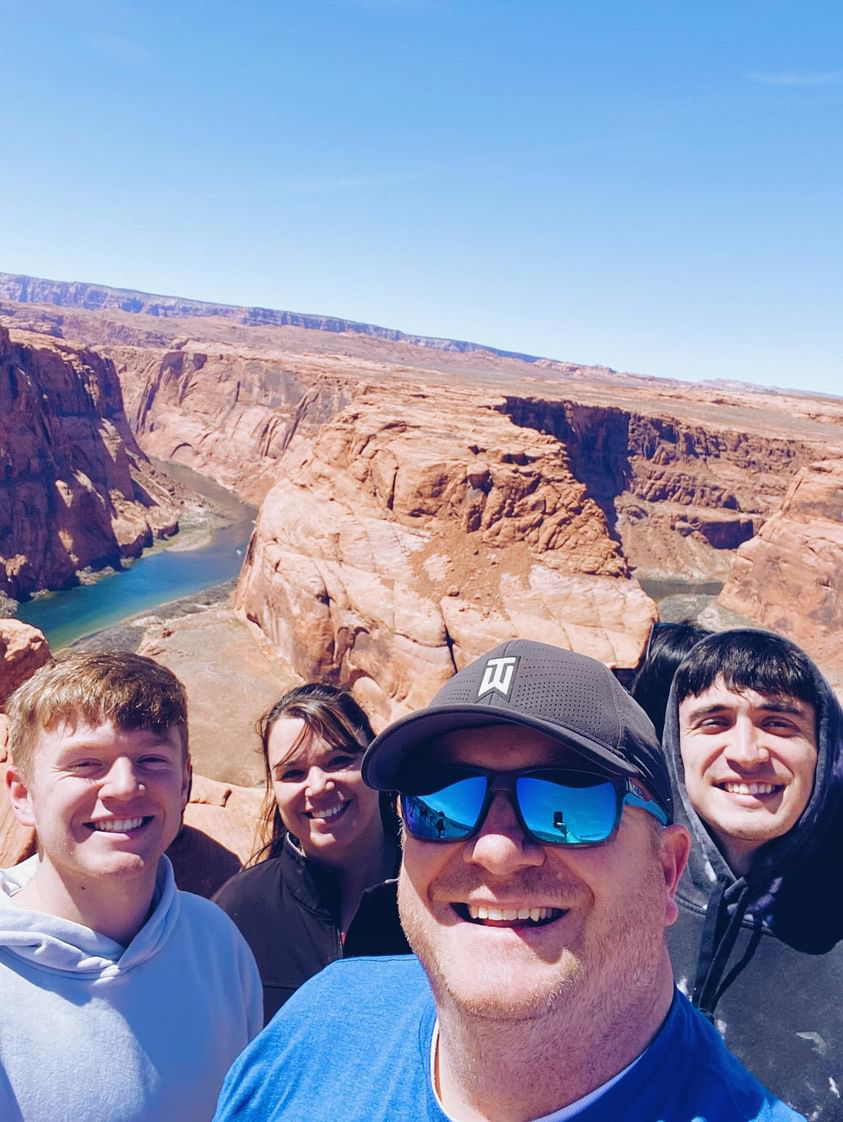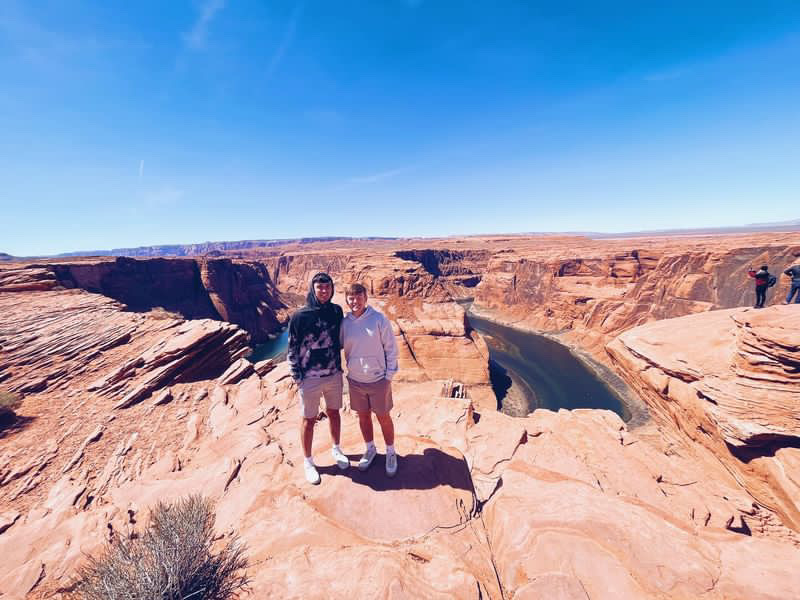


Brenden Lundberg had seen pictures of Horseshoe Bend on social media a few times. The geological loop in the Colorado River is beautiful — and Instagram algorithm-friendly.
So when Lundberg realized his family’s April 2023 road trip from Utah to Arizona would skirt the edge of the landmark, it looked like a perfect opportunity to pull over and snap a few photos.
When they got there, they were met with a packed parking lot, crowds of people and a parking fee.
It seemed everyone else had seen those social media posts of Horseshoe Bend, too.
“There didn’t even used to be a trailhead … but then one dude posted (about Horseshoe Bend) on Instagram,” Lundberg said. “So they added the parking lot and the trailhead and now it’s always crazy busy.”
Just 10 years ago, the landmark seven miles from the Grand Canyon only pulled in thousands of visitors a year. Now, annual attendance is in the millions.
Horseshoe Bend’s parent park, Glen Canyon Recreational Area, which straddles Utah and Arizona, beat out powerhouses like Zion National Park and Arches National Park for the Utah park with the most visitors in 2023, bringing in a record 5.2 million people.
The official Visit Arizona website has a page dedicated to Horseshoe Bend. The number one thing they recommend to bring? A camera.
Lundberg said even with a pack of amateur photographers clustered at the trailhead, the bend was “still really cool.”
“I feel like people definitely are more likely to get outside and go somewhere, even if it is just to take a picture,” he said.
In the digital age, hiking has morphed from a sport to a piece of social currency — and more and more people are cashing in.
In a Reddit thread titled, “Why does everyone on Tinder say they’re into hiking?” user Dezdemona_ said she listed hiking as one of her interests on a resume, even though she never hiked.
“It was just something that made me seem more active and outgoing, since all of my hobbies are watching movies, crocheting or other sitting still stuff. It’s also something that’s easy to justify: I like walks, I like nature… why not hiking?”
People might create an outdoorsy online persona because it makes them seem “active” and “fun,” Lundberg said.
In an informal survey of Instagram users, 97% said they had posted online about nature or a hike at some point. 77% had visited a national park or hiking trail because of an Instagram post and 62% had gone on a hike for the photo op.
Social media documentation of outdoor experiences isn’t just a faddish concern among hiking dilettantes — some experienced hikers, mountain bikers and photographers also feel a pull to post.
“Quite often I take the pictures (of nature) with Instagram in mind,” study participant Anne said in research article “The Instagrammable Outdoors – Investigating the sharing of nature experiences through visual social media.”
The study explores the aestheticization of the outdoors. In other words, some scenic locales are just a little more Instagram-worthy than others.
Study participants often posted “stunning views or recognizable places, which were shaped by participants’ norms of what an Instagrammable landscape looked like,” the study said.
No matter what the participants’ intentions, they all gave in — consciously or not — to the Instagram ideal, according to the study. The photos they chose to post of outdoor scenes “were rather similar.”
This homogenization of online nature content is at the heart of the overcrowding problem Lundberg and others experience at places like Horseshoe Bend.
Turns out when people’s Instagram feeds become seas of double tap-able, generic nature photos, people tend to seek out those same photo-ops — en masse.
According to hiking guidebook writer and outdoor enthusiast Craig Romano, there’s a lot of crowdsourced “garbage” online that keeps people going to the same popular spots over and over.
In recent years, he’s added a crowd rating to trails he writes about so people will know what they’re getting into.
“Some of these places are so popular because they’re easier to get to,” he said. “I don’t want it to feel like a city park in the wilderness.”
However, he said, the vast majority of trails he explores don’t have a crowding problem at all — if anything, they’re underused.
“If trails don’t get used, they’ll just get abandoned,” he said. “We’ve got to get people out to other areas.”
Romano, who has hiked more than 2,000 trails in Washington State alone, knows from experience there are plenty of alternatives to the big name, big parking lot spots.
When he starts compiling a new guidebook, Romano said he tries to be “really comprehensive.” He includes hikes with name recognition, but he also packs in the smaller trails that many long-time locals don’t even know about.
Some people have criticized Romano for “exposing” hiking locations. To this, he said “It’s public land. You don’t own this. We all own it.”
Studies suggest that most of the folks getting riled up about extra bodies on the trails seem to be white people with disposable income, who aren’t used to sharing the outdoors.
This isn’t new: the first advocates for gatekeeping were well-to-do Americans at the turn of the twentieth century who wanted “a more intimate experience with wilderness,” away from the masses, according to the Forest History Society.
Lower-income groups and racial minorities have historically been excluded from outdoor leisure activities, mostly because of distance, cost and lack of awareness, according to an article published in “Annals of Leisure Research,” vol. 25.
Though not a cure-all, social media boosts awareness about hikes among this out-group.
And sure, while it might make some trails more crowded, social media popularity is not a death sentence for the outdoors.
If you ask Romano, he’ll tell you that half the fun of hiking is researching new trails — and scanning top 10 lists on AllTrails doesn’t count.
“You’ve got to really dig out good sources … There are writers out there who have websites and social media,” he said. “I love the discovery, getting the maps out, exploring the sites.”
Romano said he talks to locals, scans maps for unmarked green spots and chats with land management agencies. When he finds a cool spot, he posts on his website and on his personal social media.
“It’s not like this information is hidden,” Romano said.
For avid hikers in Provo, Romano recommended heading west instead of following the crowds to the big parks in Southern Utah. Great Basin National Park off of Highway 50 is a good place to start, he said.
Lundberg is on board with the social media hiking scene. “I appreciate when people post their hikes on social media,” he said. “Everybody should be able to see the different places in the world.”




